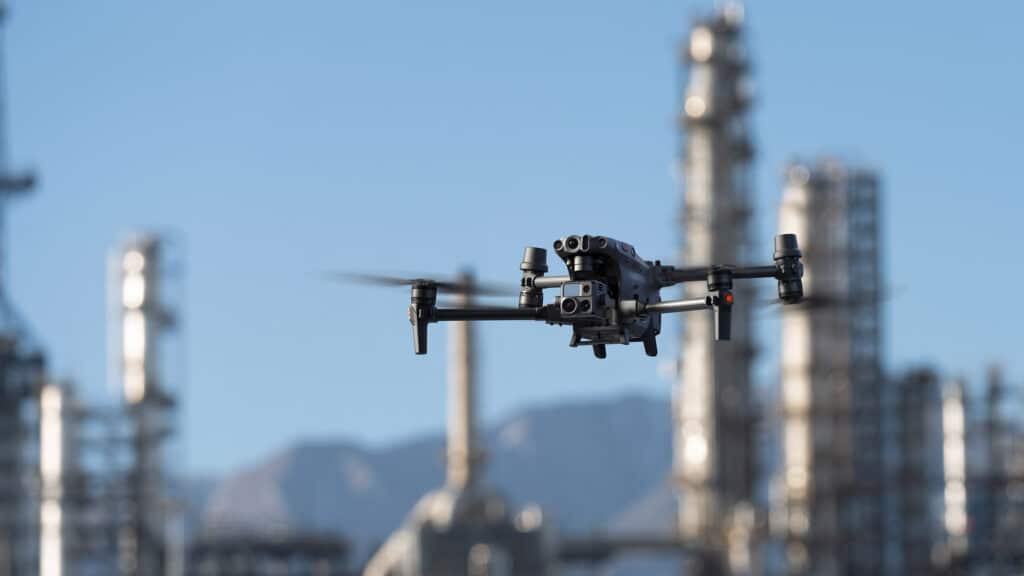
Right from the planning stage, there is a great deal of exertion, time, money, manpower, and significantly more that goes into every stage in the Energy Sector. But how confident are we about the efficiency of the products/operations? Are they flawless? We have to figure it out and hence we might think of “inspections”. Great! But we can’t really afford to move ahead assessing the efficiency of the assets only with the same old traditional methods – the damage will be done and dusted – yes, by the time the traditional inspection is done, even a minor issue might have ended up as a catastrophic accident!
Here is when drones come to the rescue, with a scope of ‘Predictive Maintenance’. Drones collect data, and the insights drawn from the analytics are your game changer! Drones in the Energy Sector make operations Safer, Efficient, Accurate, Quick, and way more Cost-effective, as contrasted with the traditional practice of manned inspections. The automated mode of operation and the ability for real-time monitoring make it even more flexible and efficient.
Having said that, now let’s dive deeper into more practical applications of Drones in the Energy Sector.

Needn’t say more – Solar power is one of the most important sources of renewable energy, making its ROI crucial both financially and environmentally. Therefore, maximizing efficiency is the goal, and it can only be achieved by periodic inspections followed by proper maintenance. But when it comes to solar energy sectors, drones can benefit right from scratch. Drones support the engineers in examining the entire field by helping them place the solar panels at optimum levels on any piece of land more quickly and efficiently than the traditional methods. Coupled with artificial intelligence, drones can also help in improving the layout of solar fields. Objects like transmission lines, a shadow from a nearby vegetation, the slope of the landscape, and so on can be scrutinised and taken care of while finalising the layout.
Automated Drone flights coupled with High-resolution cameras and Thermal sensors enable the detection of the majority of the faults or anomalies in the solar panel, hence preventing assets from being impaired. Any issue with a cell, panel, or entire string will appear as hotspots to the thermal sensor.
Apart from aerial inspections, drones are also the best option when it comes to mapping, location and tracking, as drones can cover more areas more quickly by air than a person on the ground. Hence, it is safe to summarise that the drones can assist with
The traditional powerline inspection process is inefficient and hazardous. Loss of time, cost, and most importantly the risk involved is enough and more reason to switch to drones for powerline inspections.
One of the major disadvantages of using ground teams is the fact that you would have to shut down that entire power line to make it safer for human contact, resulting in increased downtime. However, with drones, you can fly extremely close to the high live-voltage powerlines and conduct thorough inspections without causing any downtime or disruptions.
A drone-powered LiDAR scan provides high-quality pictures from optimal perspectives, which in turn can easily identify overgrown greenery or any other blockages, and help identify issues before they become problems. In a nutshell, drones facilitate:

The wind turbine blades have to be inspected as it helps us eliminate unplanned shutdowns by enabling us to preventively conduct maintenances during scheduled downtime. Severe deterioration of the blades or any sort of glitches can result in major upheavals, which will, of course, result in extreme expenses. This is when the drones come into action – Drones inspect these blades, simple as that. Combined with the right software, drones autonomously fly safely and collect high-resolution photographs, which helps in identifying even hairline ruptures. This can even help you with ‘predictive maintenance’, which means that you can act even before things get worse!
To be compatible with the rise in demand for wind energy, manufacturers and wind farm operators tend to opt for bigger turbine sizes. While we can’t neglect the fact that bigger turbines result in higher production of power, it also poses a toll on the turbines, as it becomes more sensitive to lightning, and other depreciating environmental conditions. This makes the turbines erode and deteriorate faster. However, as you might have rightly guessed by now, drones & robotics can be adopted for LPS (Lightning Protection System) inspection, as a preventive maintenance approach, which can prevent minor issues from being converted into more extensive and costly failures.
We hope this article will guide you with better-informed decisions about how drones can benefit your business. Wish to know more about the specific kind of drones that caters to your goal? Get in touch with us, can’t wait to see your business flourish!